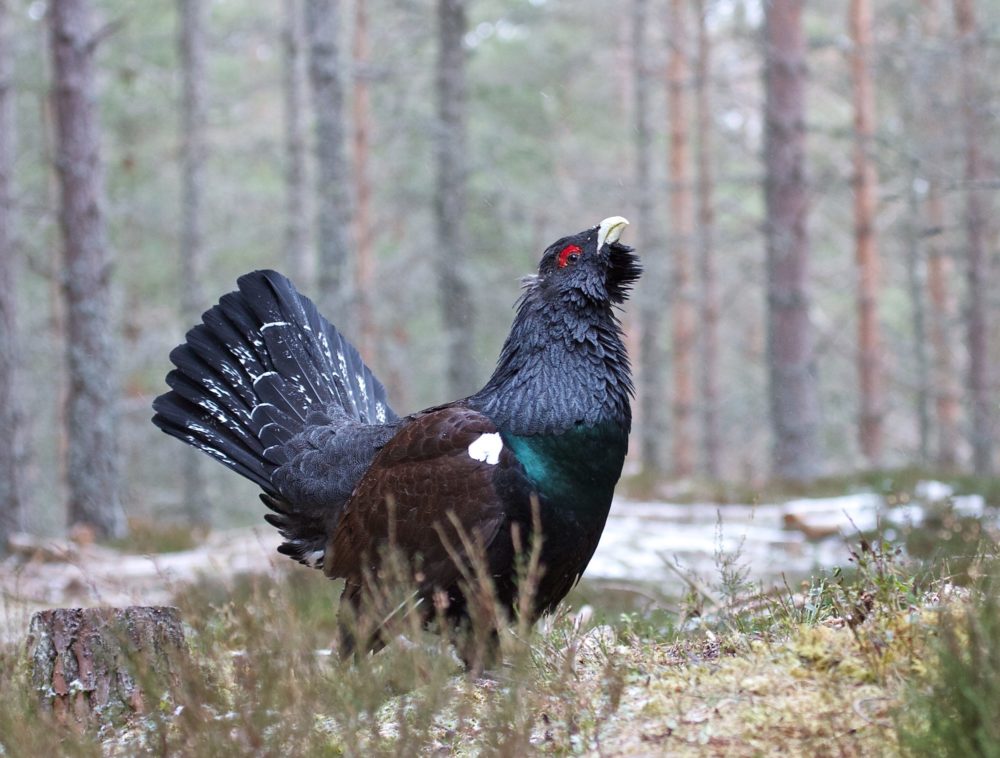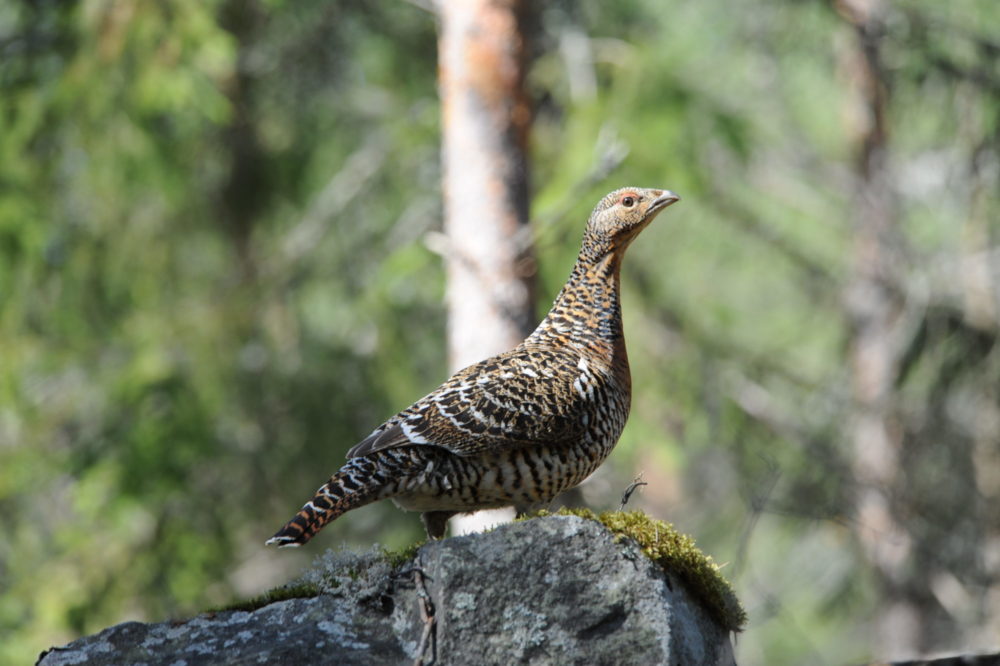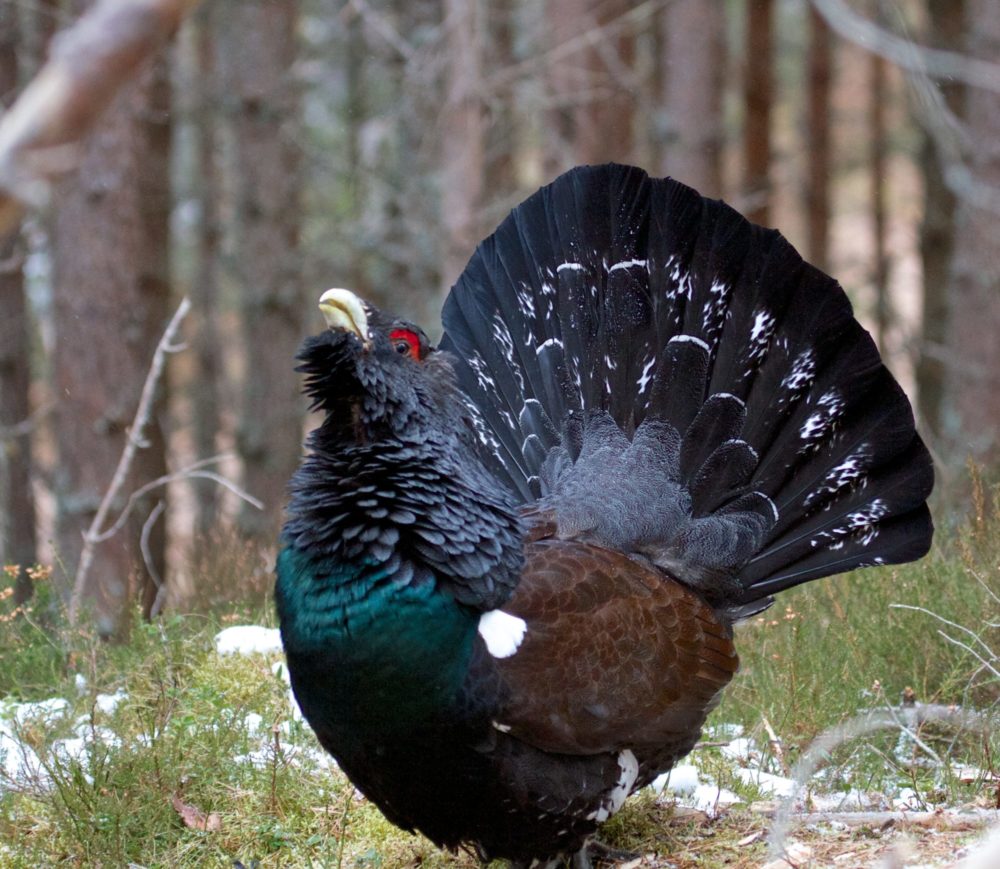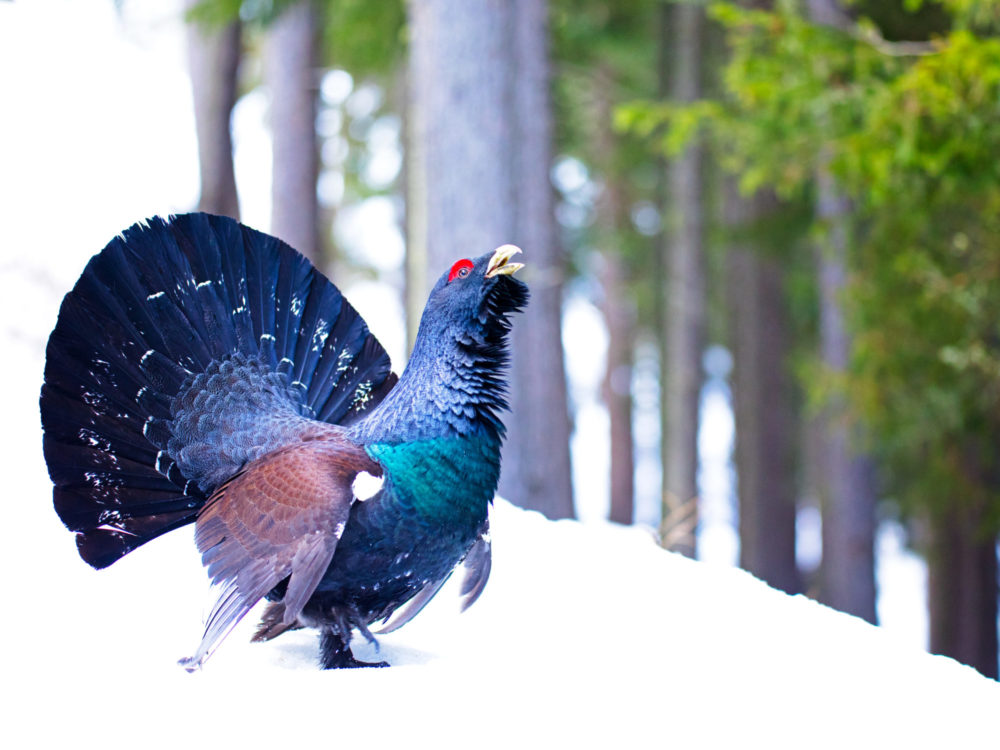Capercaillie
The capercaillie is the largest of our landfowl species. If you are walking in the forest and startle a capercaillie, you will likely jump out of your skin. This large bird taking flight makes a tremendous racket. The male capercaillie is a cock, while the female is a hen.
Capercaillie facts
Latin: Tetrao urogallus
Family: The pheasent family (Phasianidae)
Length: aprox. 90 cm
Wingspan: aprox. 120 cm
Weight: 1,7 – 2,5 kg (hen) , 3 – 5 kg (cock)
Breeding season: April – Mai
Number of young: 6 – 8
Photo: sighmanb / CC BY

How does the capercaillie live?
The capercaillie will gather in the spring for the ‘lek’. The lek is when the cocks act tough for the hens and demonstrate who’s the strongest! The fights between the cocks can be rough, and the winner gets to mate with the hens who watched the display.
The hen will make her nest directly on the ground, preferably in fairly dense, dampish spruce forest, where there will be plenty of insects for the chicks to eat when they hatch. The hen raises her chicks on her own and spends the summer with them. As autumn approaches, the brood will disperse and the capercaillies will live alone for the rest of their lives – apart from the spring, when they gather for the lek.
Foto: Farbror / CC BY

What does the capercaillie eat?
When they are small chicks, capercaillies eat insects: caterpillars, spiders, etc. They will gradually switch to plants. In summer, the capercaillie has a varied diet, eating the leaves, buds and shoots of various leaves, but blueberry bushes are especially popular. The capercaillie also eats a lot of conifer needles, and little else in winter. The cock likes to settle itself in a tree and graze. This is easy to spot in winter, as there will be a lot of conifer needle debris and capercaillie droppings under such trees.
Photo: sighmanb / CC BY

Where does the capercaillie live?
The capercaillie is happiest in old conifer forest, where there is often some variety when it comes to tree types and density. This variety allows the capercaillie to find food, but also offers good hiding places, such as under a dense spruce. Capercaillies are found in forests in most of the country, but their numbers have declined, partly owing to modern forestry operations.
Photo: Stelvioparc / CC BY-SA
